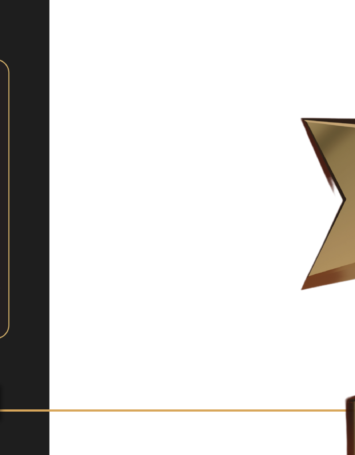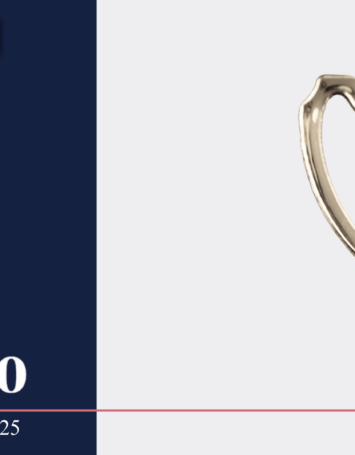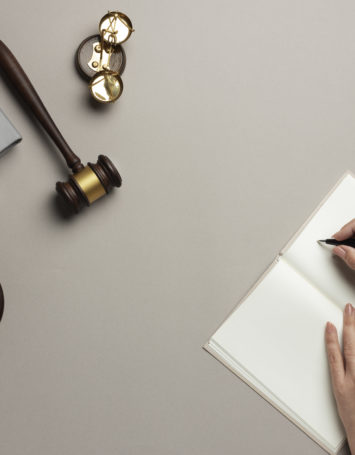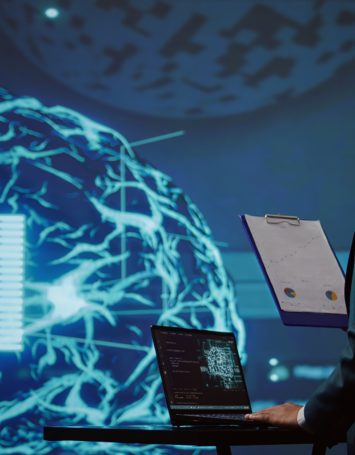Article written by Clyde Shuman
The Review Board of the United States Copyright Office has affirmed a Copyright Office refusal to register an artwork created by artificial intelligence (AI), reiterating the long-standing Copyright Office policy that (the Office will not register works “produced by a machine or mere mechanical process” that operates “without any creative input or intervention from a human author” because, under the Copyright statute, “a work must be created by a human being.”
The work in question, a two-dimensional artwork titled “A Recent Entrance to Paradise,” is depicted below:
The claimant, Steven Thaler, sought to register the Work, which he claimed was created by something called the “Creativity Machine.” Thaler left a note for the Office stating that the Work “was autonomously created by a computer algorithm running on a machine” and he was “seeking to register this computer-generated work as a work-for-hire to the owner of the Creativity Machine.” The Copyright Office refused to register the claim, finding that it “lacks the human authorship necessary to support a copyright claim.”
Thaler sought reconsideration, that “the human authorship requirement is unconstitutional and unsupported by either statute or case law.” The Copyright Office again concluded that the Work “lacked the required human authorship necessary to sustain a claim in copyright,” because Thaler had “provided no evidence on sufficient creative input or intervention by a human author in the Work.” The Office also said that it would not “abandon its longstanding interpretation of the Copyright Act, Supreme Court, and lower court judicial precedent that a work meets the legal and formal requirements of copyright protection only if it is created by a human author.”
Thaler again sought reconsideration, renewing his arguments that the Copyright Office’s human authorship requirement is unconstitutional and unsupported by case law. Inter alia, Thaler asserted that “there is no binding authority that prohibits copyright for [computer-generated works],” that copyright law already allows non-human entities to be authors under the work made for hire doctrine, id. at 4; and [dramatically] that the Copyright Office “is currently relying upon non-binding judicial opinions from the Gilded Age to answer the question of whether [computer-generated works] can be protected.”
The Board disagreed with Thaler, citing the COMPENDIUM OF U.S. COPYRIGHT OFFICE PRACTICES § 602.4(C) (3d ed. 2021) for the proposition that copyright law only protects “the fruits of intellectual labor” that “are founded in the creative powers of the [human] mind,” as well as the corollary that the Office will not register works “produced by a machine or mere mechanical process” that operates “without any creative input or intervention from a human author” because, under the statute, “a work must be created by a human being.” Here, Thaler neither provided evidence that the Work is the product of human authorship or convinced the Copyright Office “to depart from a century of copyright jurisprudence.”
The Board discussed at length relevant case law, including Supreme Court precedent, addressing the requirement for a human author in order to obtain registration. The Board also noted that the Copyright Office’s position is position is supported by a recent report from the U.S. Patent and Trademark Office addressing intellectual property issues raised by AI, including whether “a work produced by an AI algorithm or process, without the involvement of a natural person . . . qualif[ies] as a work of authorship” under the Copyright Act. The “vast majority” of public comments on the question “acknowledged that existing law does not permit a non-human to be an author [and] this should remain the law.”
The Board also rejected Thaler’s second argument on reconsideration, namely, that artificial intelligence can be an author under copyright law because the work-for-hire doctrine allows for “non-human, artificial persons such as companies” to be authors. The Board noted that the Work in question “is clearly not a work made for hire as defined in the Copyright Act,” since it was not prepared by “an employee” or by one or more “parties” who “expressly agree in a written instrument” that the work is for-hire. See 17 U.S.C. § 101. Under either definition, a work-for-hire is created as the result of a binding legal contract, whether an employment agreement or a work-for-hire agreement. Since the AI “Creativity Machine” here cannot enter into binding legal contracts, it cannot meet this requirement. The Board also pointed out that the work-for-hire doctrine only speaks to the identity of a work’s owner, not whether a work is protected by copyright. Since the Copyright statute requires that a work contain human authorship, the Work here is not a work made for hire because it is neither a “work of authorship” nor a work created “for hire.”




